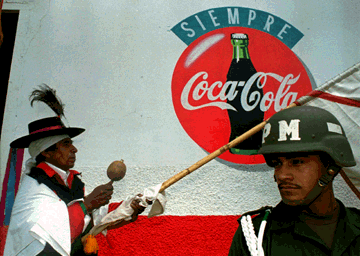Mar
3
I have to say that although this week’s readings were long, I found them very engaging. Especially the Campbell article, because it explored a part of Latin American culture that many times goes unnoticed by the people living or commuting by the areas where some of this public murals rest. I became completely engaged early in Campbell’s article early when reading about the Tepito arte Aca. For once, I have never seen these murals personally, but given the harsh environment in which these artists grew up I assume that some of the work must be fascinating. Not only because it was partially a political movement, but also because it served an alternative outlet for emotions, including anger and frustration – which often is let out through violence -. Furthermore, Campbell’s analysis seemed to be very through, not only was he interested on what happened to this form of art. He was also interested to see what happened to the people.
To many, the fact that many of the leaders of the arte Aca movement ended up being part of the bureaucratic system in Mexico might have been a surprise. Now, I am not going to pretend I have always know why the government during the PRI – party that was on power over 70 years till the 2000 elections – era actively absorbed leaders of civil movements into its ranks, however I would like to share with you something I recently learned in a PoliSci class regarding Latin American politics. The PRI regime is consider a Bureaucratic Authoritarian regime, what that means would take a while to explain, but how it connects to our class is the following way: the PRI constantly used government revenues to buy off political opponents. This is relevant because during the 1980s when Mexico for several reasons underwent a financial crisis, this large bureaucratic network could no longer be fed. The result was the resurgence of political opposition, which ended up in their removal of power – that is in essence a term of PoliSci for you -.
So where am I going with this?
Very simple, the tentacles of the state reach/or use to reach farther than many people thought. However, this arte Aca movement in my opinion did not die… it evolved. In many areas of Mexico one can now find the so called “graffitis.” These forms of ‘art’ are usually disregarded as acts by rebellious, angry, disrespectful teens. Yet, many of them contain clear political connotations, and definitely reflect certain social aspects of society. I wish, Campbell had taken a few of these examples. I know that on my next trip to Mexico City I’ll keep my eyes open and wont disregard this ‘acts of vandalism’ just yet.

